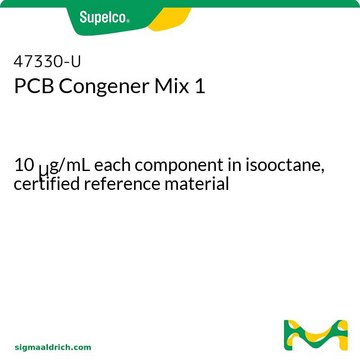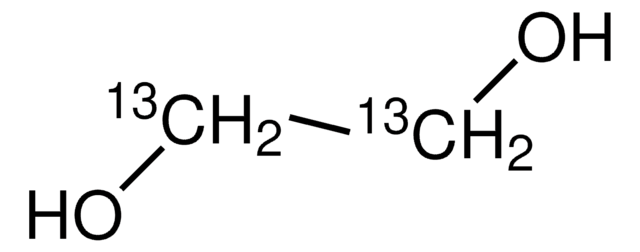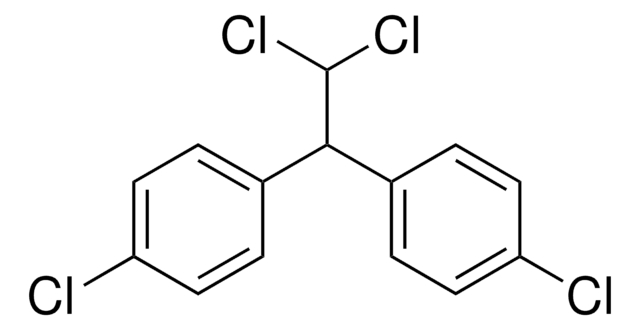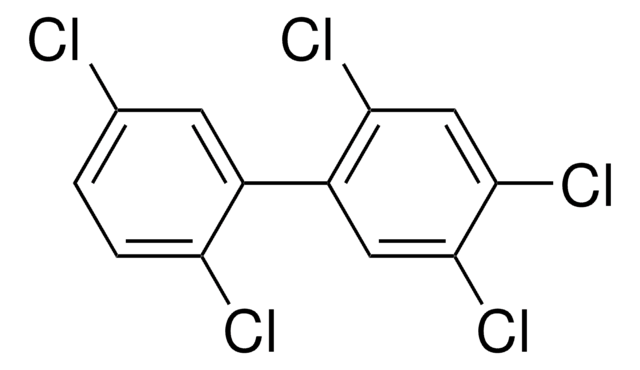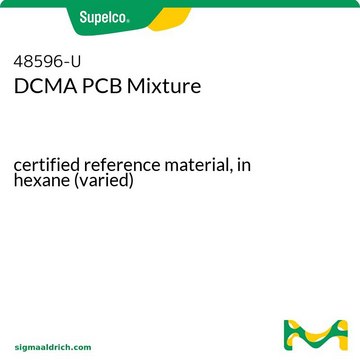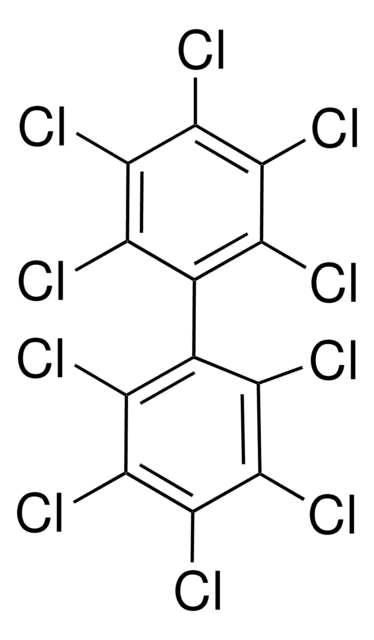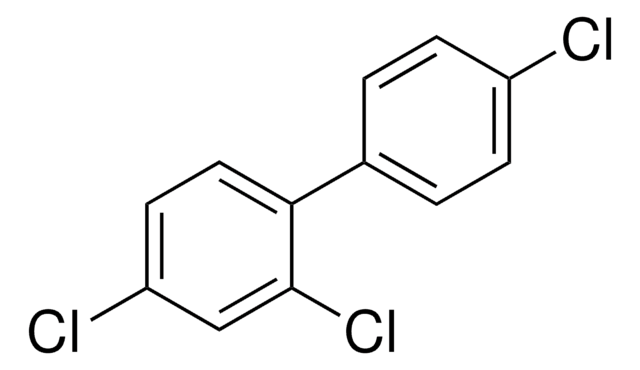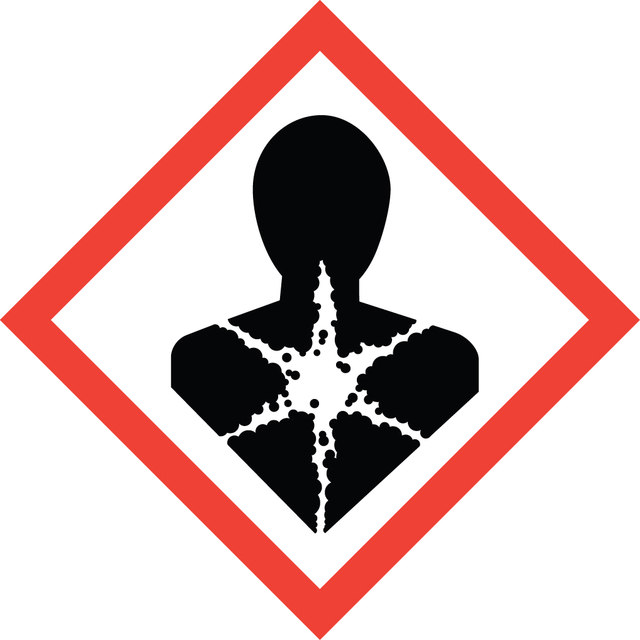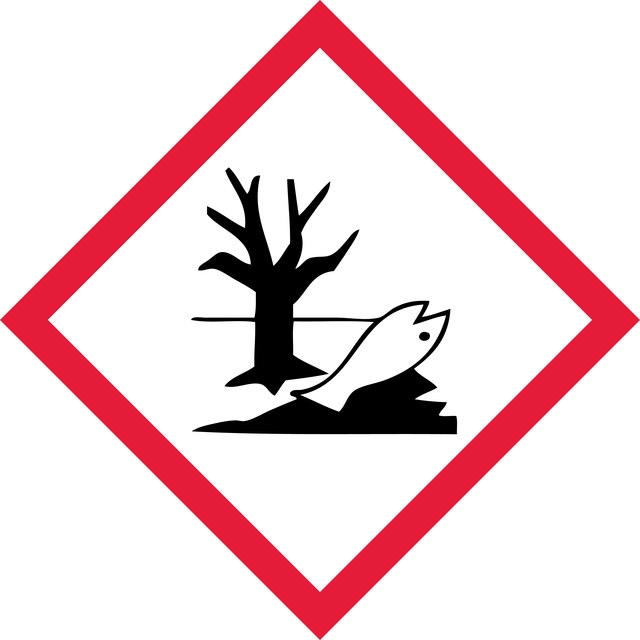推荐产品
等级
certified reference material
Agency
BCR®
制造商/商品名称
JRC
应用
pharmaceutical (small molecule)
包装形式
neat
储存温度
2-8°C
SMILES字符串
Clc1cc(Cl)c(cc1Cl)-c2cc(Cl)c(Cl)c(Cl)c2Cl
InChI
1S/C12H3Cl7/c13-6-3-8(15)7(14)1-4(6)5-2-9(16)11(18)12(19)10(5)17/h1-3H
InChI key
WBHQEUPUMONIKF-UHFFFAOYSA-N
正在寻找类似产品? 访问 产品对比指南
分析说明
For more information please see:
BCR298
BCR298
法律信息
BCR is a registered trademark of European Commission
警示用语:
Warning
危险声明
危险分类
Aquatic Acute 1 - Aquatic Chronic 1 - STOT RE 2
储存分类代码
11 - Combustible Solids
WGK
WGK 3
闪点(°F)
Not applicable
闪点(°C)
Not applicable
个人防护装备
Eyeshields, Gloves
法规信息
新产品
Johan Maervoet et al.
Environmental toxicology and chemistry, 24(3), 597-602 (2005-03-23)
Fertilized chicken eggs were injected with high doses of individual polychlorinated biphenyl (PCB) congeners (0.5 microg of PCB 77, 9.8 microg of PCB 153, or 10.9 microg of PCB 180) before incubation to investigate the structure-specific uptake of these compounds
Roshan Tofighi et al.
Toxicological sciences : an official journal of the Society of Toxicology, 124(1), 192-201 (2011-09-13)
Developmental exposure to food contaminants, such as polychlorinated biphenyls (PCBs), has been considered as a possible cause of neurodevelopmental disorders. We have investigated the effects of noncytotoxic concentrations of PCBs 153 and 180 on spontaneous differentiation of rat embryonic neural
Robert Roos et al.
Toxicology, 284(1-3), 42-53 (2011-04-05)
PCB 180 (2,2',3,4,4',5,5'-heptachlorobiphenyl) is a persistent and accumulating polychlorinated biphenyl abundantly present in food and the environment. In this study, we used highly purified PCB 180 (dioxinlike impurities: 2.7 ng TEQ(WHO)/g PCB 180) in a 28-day toxicity study in young
Elsa C Antunes-Fernandes et al.
Toxicology letters, 206(2), 158-165 (2011-07-26)
Traditional risk assessment of potential endocrine-disruptive pollutants, including PCBs, focus mainly on the effects of parent compounds. Still, biotransformation results in systemic exposure to PCBs and their bioactive metabolites. In the present paper, the effects of twenty ultra-pure non-dioxin-like (NDL)
Joanne S Colt et al.
Blood, 113(9), 1899-1905 (2008-12-11)
Organochlorine exposure was linked to non-Hodgkin lymphoma (NHL) risk. To determine whether this relation is modified by immune gene variation, we genotyped 61 polymorphisms in 36 immune genes in 1172 NHL cases and 982 controls from the National Cancer Institute-Surveillance
我们的科学家团队拥有各种研究领域经验,包括生命科学、材料科学、化学合成、色谱、分析及许多其他领域.
联系技术服务部门